42 what is the purpose of chromatography
SCION Instruments | Gas Chromatography Solutions The purpose of this webinar explores root cause analysis and common troubleshooting in Liquid Chromatography. Webinars. SCION Instruments Webinar: Compass CDS Sample Streamer (07/09/21) We recently ran a webinar which focused on Compass CDS Sample Streamer. You can find the full length stream in this article. What is the purpose of column chromatography lab? - Short-Fact Chromatography serves mainly as a tool for the examination and separation of mixtures of chemical substances. Chromatography is using a flow of solvent or gas to cause the components of a mixture to migrate differently from a narrow starting point in a specific medium, in the case of this experiment, filter paper.
What is the difference between analytical and preparative chromatography? Score: 5/5 (48 votes) . The main difference between preparative and analytical chromatography is that the main purpose of preparative chromatography is to isolate and purify a reasonable quantity of a specific substance from a sample whereas the main purpose of analytical chromatography is to separate the components of a sample.

What is the purpose of chromatography
Gas Chromatography - What It Is and How It Works - ThoughtCo Gas chromatography (GC) is an analytical technique used to separate and analyze samples that can be vaporized without thermal decomposition. Sometimes gas chromatography is known as gas-liquid partition chromatography (GLPC) or vapor-phase chromatography (VPC). Technically, GPLC is the most correct term, since the separation of components in ... What is the main purpose of chromatography? - ScienceOxygen What is the main purpose of chromatography? September 3, 2022 by Alexander. The objective of chromatography is to separate the various substances that make up a mixture. The applications range from a simple verification of the purity of a given compound to the quantitative determination of the components of a mixture. What practical applications does chromatography have? The chromatography technique also plays a vital role in the development of newer drugs. For example, any presence of impurities and several other unknown compounds are detected in the sample of drugs by using chromatography. Also, the drug purity sample is analyzed by using this technique of chromatography.
What is the purpose of chromatography. What is the main purpose of chromatography? - Heimduo Chromatography is a biophysical technique that separates, identifies, and purifies the components of a mixture for quantitative and qualitative analysis. An extensive range of chromatographic procedures make use of differences in charge, binding affinities, size, and other properties for separation of materials. What are 3 uses of chromatography? chromatography | Definition, Types, & Facts | Britannica chromatography, technique for separating the components, or solutes, of a mixture on the basis of the relative amounts of each solute distributed between a moving fluid stream, called the mobile phase, and a contiguous stationary phase. The mobile phase may be either a liquid or a gas, while the stationary phase is either a solid or a liquid. When Should an Internal Standard be Used? - Chromatography … Jun 01, 2012 · For liquid chromatography–mass spectrometry (LC–MS), however, the added selectivity of the MS detector often will allow independent measurement of the analyte and IS if they do not have the same molecular weight. This is one reason why stable-label, or isotopically labeled, versions of the analyte are used with LC–MS methods — the peaks ... Does chromatography separate mixtures? - masx.afphila.com Chromatography is a method of separating mixtures by using a moving solvent on filter paper. ... The solvent flows along the paper through the spots and on, carrying the substances from the spot. Each of these will, if the solvent mixture has been well chosen, move at a different rate from the others. What is the purpose of chromatography?
What is the purpose of liquid chromatography? - Heimduo What is the purpose of liquid chromatography? Liquid chromatography is a technique used to separate a sample into its individual parts. This separation occurs based on the interactions of the sample with the mobile and stationary phases. Open Access Journals | Scientific Conferences and Events Organizer We are an Open Access publisher and international conference Organizer. We own and operate 500 peer-reviewed clinical, medical, life sciences, engineering, and management journals and hosts 3000 scholarly conferences per year in the fields of clinical, medical, pharmaceutical, life sciences, business, engineering and technology. paper chromatography | Definition, Method, & Uses | Britannica paper chromatography, in analytical chemistry, technique for separating dissolved chemical substances by taking advantage of their different rates of migration across sheets of paper. It is an inexpensive but powerful analytical tool that requires very small quantities of material. The method consists of applying the test solution or sample as a spot near one corner of a sheet of filter paper. Chromatography Principle and its Types - Definition, Principle ... - BYJUS What is Chromatography? Chromatography is the technique for the separation, purification, and testing of compounds. The term "chromatography" is derived from Greek, chroma meaning, "colour," and graphein meaning "to write.". In this process, we apply the mixture to be separated on a stationary phase (solid or liquid) and a pure solvent such as water or any gas is allowed to move ...
Chromatography Definition and Examples - ThoughtCo Anne Helmenstine. Chromatography is a group of laboratory techniques used to separate the components of a mixture by passing the mixture through a stationary phase. Typically, the sample is suspended in the liquid or gas phase and is separated or identified based on how it flows through or around a liquid or solid phase. When chromatography is useful? Explained by FAQ Blog What is the purpose of using paper chromatography? Paper chromatography, in analytical chemistry, technique for separating dissolved chemical substances by taking advantage of their different rates of migration across sheets of paper. It is an inexpensive but powerful analytical tool that requires very small quantities of material. Column Chromatography - Principle, Procedure, Applications & Elution in ... Types of Column Chromatography: 1. Adsorption column chromatography - Adsorption chromatography is a technique of separation, in which the components of the mixture are adsorbed on the surface of the adsorbent. 2. Partition column chromatography - The stationary phase, as well as mobile phase, are liquid in partition chromatography. 3. What is Chromatography, How does it Work, and where is it Used Chromatography is a biophysical technique that separates, identifies, and purifies the components of a mixture for quantitative and qualitative analysis. An extensive range of chromatographic procedures make use of differences in charge, binding affinities, size, and other properties for separation of materials.
What Is the Purpose of Paper Chromatography? - Reference.com The purpose of paper chromatography is to separate a mixture into its various components. Using a sample that is a mixture of several highly colored components, such as ink or leaf pigments, allows the scientist to see the components as they separate. With samples that do not display colors, other means of detection are necessary.
What is the purpose of water in ink chromatography? - FAQs Chromatography is also used to help catch criminals. In line with programmes like CSI, gas chromatography is used to analyse blood and cloth samples, helping to identify criminals and bring them to justice. It's clear to see that chromatography is an unsung hero when it comes to keeping you healthy and safe everyday.
SSERC Home page - SSERC Professional Learning. SSERC offers a vast portfolio of professional learning (PL) programmes for STEM educators in Scotland. Our curricular based PL is offered to everyone: childminders, early years workers, primary and secondary staff as well as lecturers, technicians and those who work with young people in non-formal settings such as youth workers and in the CLD sector.
Separation techniques: Chromatography - PMC - PubMed Central (PMC) Chromatography is an important biophysical technique that enables the separation, identification, and purification of the components of a mixture for qualitative and quantitative analysis. ... The purpose of applying chromatography which is used as a method of quantitative analysis apart from its separation, is to achive a satisfactory ...
What is the meaning of absorption chromatography? What is the main purpose of paper chromatography? Paper chromatography, in analytical chemistry, technique for separating dissolved chemical substances by taking advantage of their different rates of migration across sheets of paper. It is an inexpensive but powerful analytical tool that requires very small quantities of material.
What was the purpose of the paper chromatography experiment? Chromatography is a method of physically separating mixtures into its individual components. It is a common laboratory technique used to identify unknown components in mixtures. Chromatography can be used to separate inks, dyes, pigments in plants, or used to determine the chemical composition of many substances.
Urine Drug Test: Purpose, Types, and Procedure - Healthline Sep 29, 2018 · If your first test comes back positive, a follow-up test known as gas chromatography/mass spectrometry (GC/MS) is done for confirmation. This type of test uses the same procedure for getting a ...
Paper Chromatography - Definition, Pigments, Polarity, and Types - VEDANTU The only purpose of paper chromatography, in general, is to split the molecules based on distinctions in size, polarity, and solubility. Paper chromatography uses paper as the stationary phase and a solvent as the mobile phase. The mobile phase travels through the stationary phase and molecules come out in a differential manner.
Gas Chromatography : SHIMADZU (Shimadzu Corporation) Principle of gas chromatography: The sample solution injected into the instrument enters a gas stream which transports the sample into a separation tube known as the "column." ... The purpose of detailed hydrocarbon analysis (DHA) is to determine the bulk hydrocarbon group type composition (PONA: Paraffins, Olefins, Naphthenes and Aromatics) of ...
What is the purpose of chromatography in a lab experiment? Chromatography is used for the separation of a mixture of compounds into its individual components. There are several ways to accomplish this but one thing that all chromatography shares in...
BASIC - Wikipedia BASIC (Beginners' All-purpose Symbolic Instruction Code) is a family of general-purpose, high-level programming languages designed for ease of use. The original version was created by John G. Kemeny and Thomas E. Kurtz at Dartmouth College in 1964. They wanted to enable students in non-scientific fields to use computers. At the time, nearly all computers required writing …
Column chromatography | Chemical processes | MCAT | Khan ... Learn how to separate chemicals using column chromatography. By Angela Guerrero. . Created by Angela Guerrero.Watch the next lesson: ....
How chromatography is carried out? Explained by FAQ Blog The two main types of chromatography are gas-liquid chromatography (GLC) and gas-solid chromatography (GSC). Both methods rely on the basically the same principles, whereby the sample is turned into a gas, mixed with an inert carrier gas and introduced into a column where a specific solvent awaits it. ... What is the purpose of chromatography ...
What is the main purpose of chromatography? - Studybuff The objective of chromatography is to separate the various substances that make up a mixture. The applications range from a simple verification of the purity. ... What is the main purpose of chromatography? ...
Understanding the Process of Chromatography Chromatography is a laboratory process of separating different components of a sample. Like, ion-exchange, affinity, HPLC, TLC, adsorption chromatography etc. Chromatography is a biophysical technique that allows us to separate, identify, and purify components of an unknown mixture. It helps us perform both qualitative and quantitative analysis.
Elution Chromatography - Graph, Types, Time and Volume - VEDANTU The main purpose of the gradient Elution in Chromatography is to elute the substances that are strongly retained by the mobile phase with a proper and clear resolution of the less retained organic components that are eluted first. In this article, you will learn about Elution Chromatography, its graph, its types, etc.
Thin Layer Chromatography (TLC) - Principle, procedure ... - BYJUS Thin Layer Chromatography is a technique used to isolate non-volatile mixtures. The experiment is conducted on a sheet of aluminium foil, plastic, or glass which is coated with a thin layer of adsorbent material. The material usually used is aluminium oxide, cellulose, or silica gel. On completion of the separation, each component appears as ...
What is the purpose of a chromatography lab? - Quora Answer (1 of 3): To conduct rather quick, convenient and accurate analyses of gas mixtures and liquids with b.p.s up to approximately 200 degrees C by means of gas-liquid and gas-solid chromatography devices. Our Aerojet lab performed perhaps 50 analyses a day by this equipment and also used it f...
Thin Layer Chromatography - Chemistry LibreTexts Answers. Thin layer chromatography (T LC) is a chromatographic technique used to se parate the components of a mixture using a thin stationary phase supported by an inert backing. It may be performed on the analytical scale as a means of monitoring the progress of a reaction, or on the preparative scale to purify small amounts of a compound.
Free Chemical Drawing Software for Students | ChemSketch ... Additional Downloads Get more information about your structure with the EPA iCSS add-on. Access the EPA’s iCSS (Interactive Chemical Safety for Sustainability) Chemistry Dashboard via ChemSketch for additional physicochemical properties, toxicity endpoints, and more information about your drawn structure.
What practical applications does chromatography have? The chromatography technique also plays a vital role in the development of newer drugs. For example, any presence of impurities and several other unknown compounds are detected in the sample of drugs by using chromatography. Also, the drug purity sample is analyzed by using this technique of chromatography.
What is the main purpose of chromatography? - ScienceOxygen What is the main purpose of chromatography? September 3, 2022 by Alexander. The objective of chromatography is to separate the various substances that make up a mixture. The applications range from a simple verification of the purity of a given compound to the quantitative determination of the components of a mixture.
Gas Chromatography - What It Is and How It Works - ThoughtCo Gas chromatography (GC) is an analytical technique used to separate and analyze samples that can be vaporized without thermal decomposition. Sometimes gas chromatography is known as gas-liquid partition chromatography (GLPC) or vapor-phase chromatography (VPC). Technically, GPLC is the most correct term, since the separation of components in ...



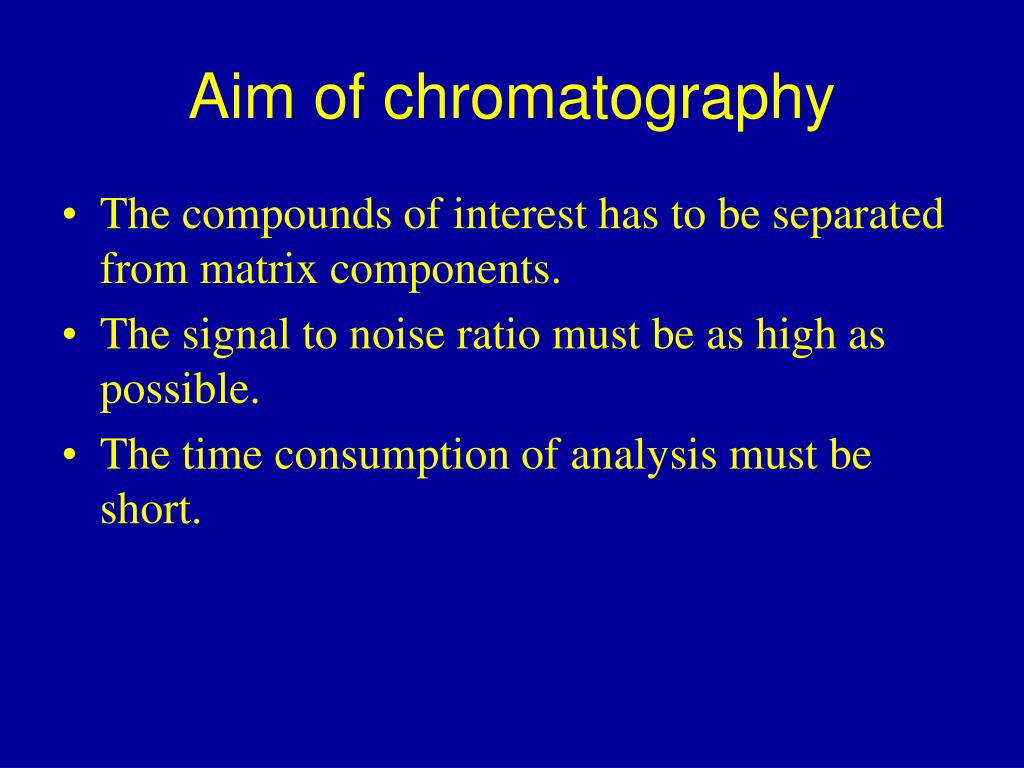
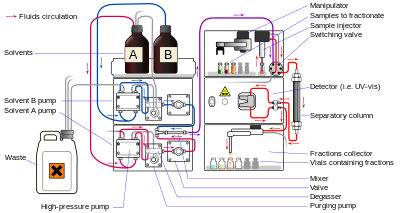

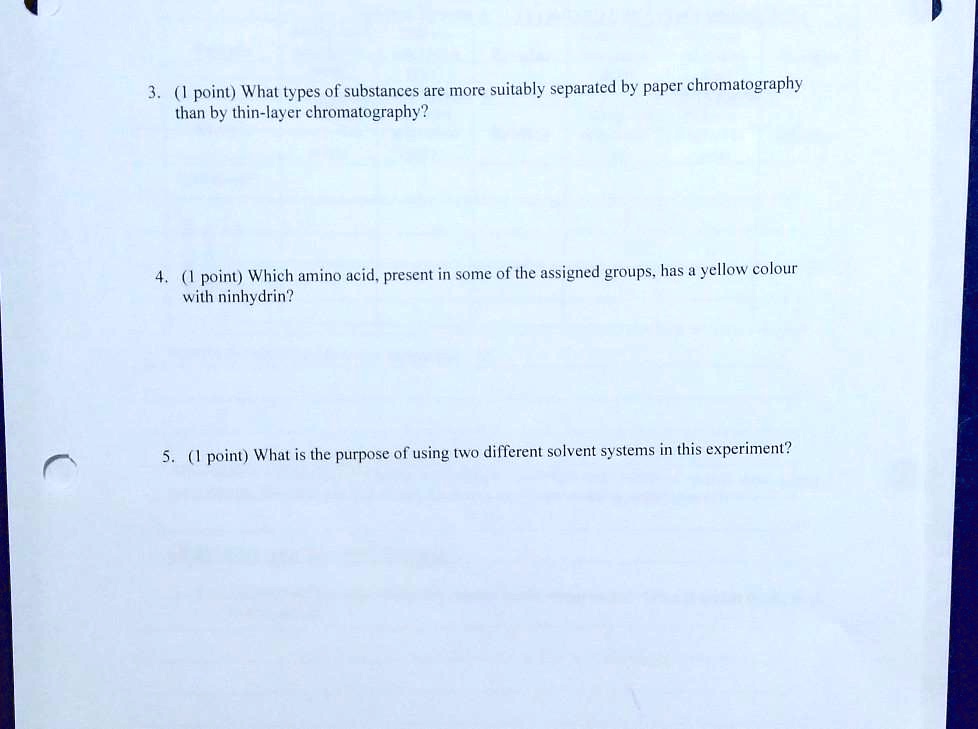
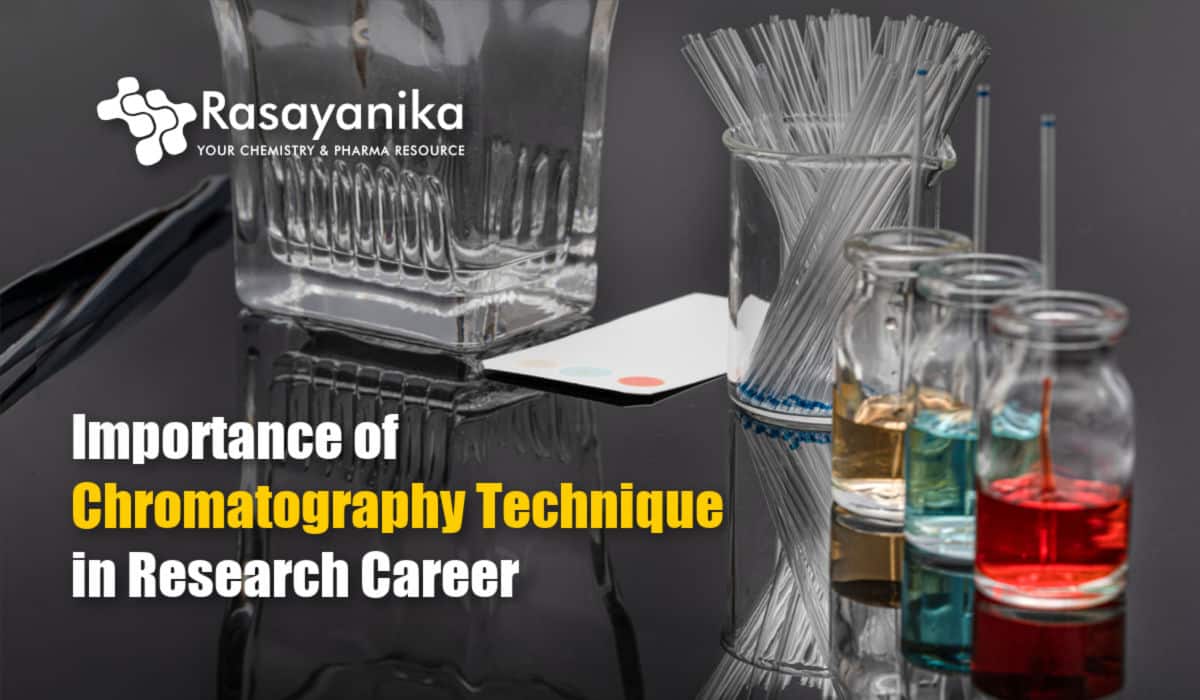

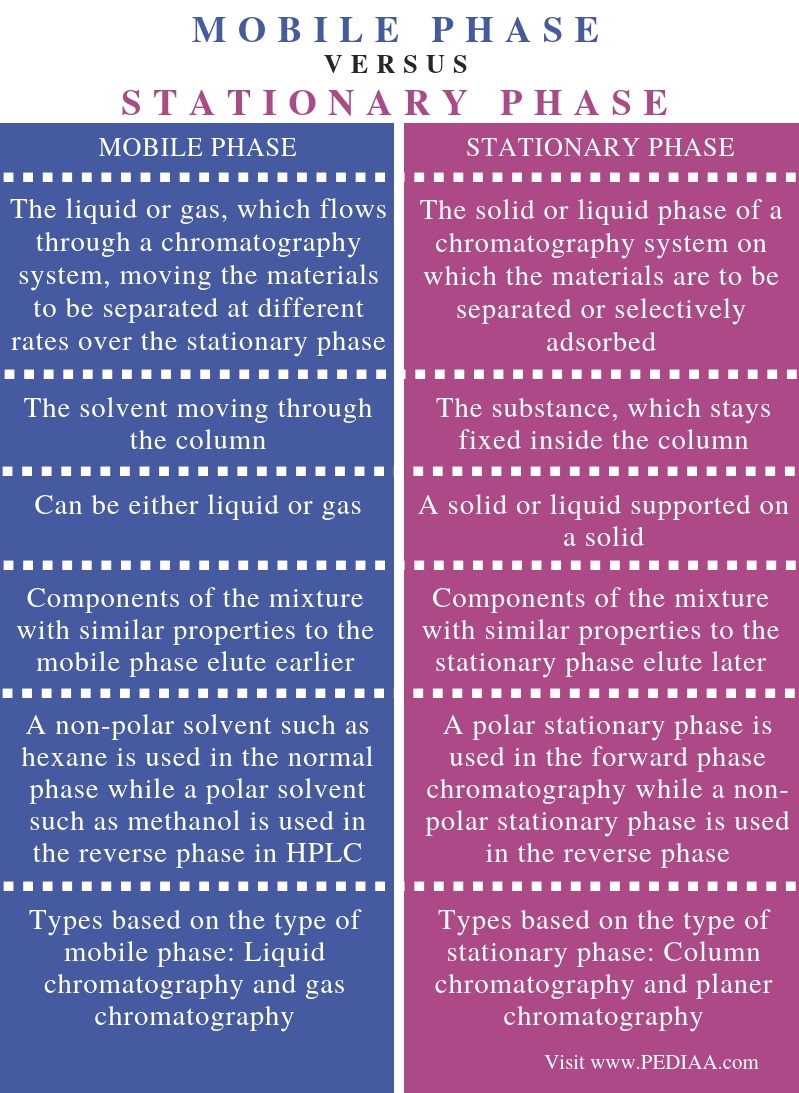
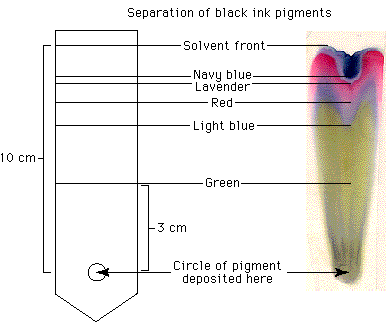
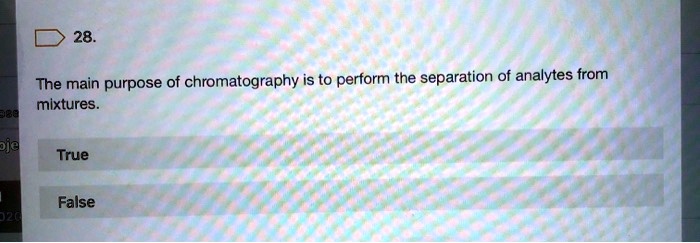

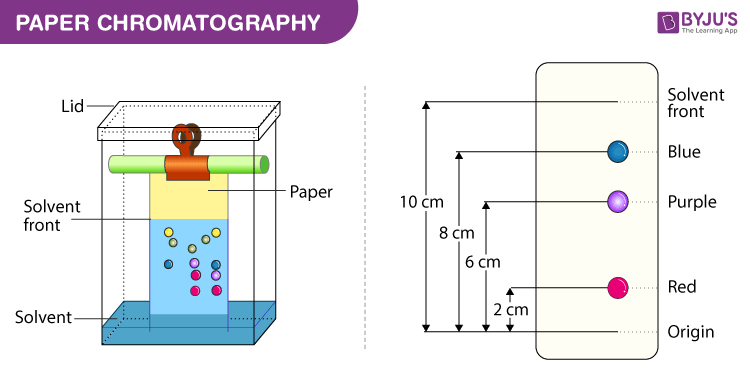
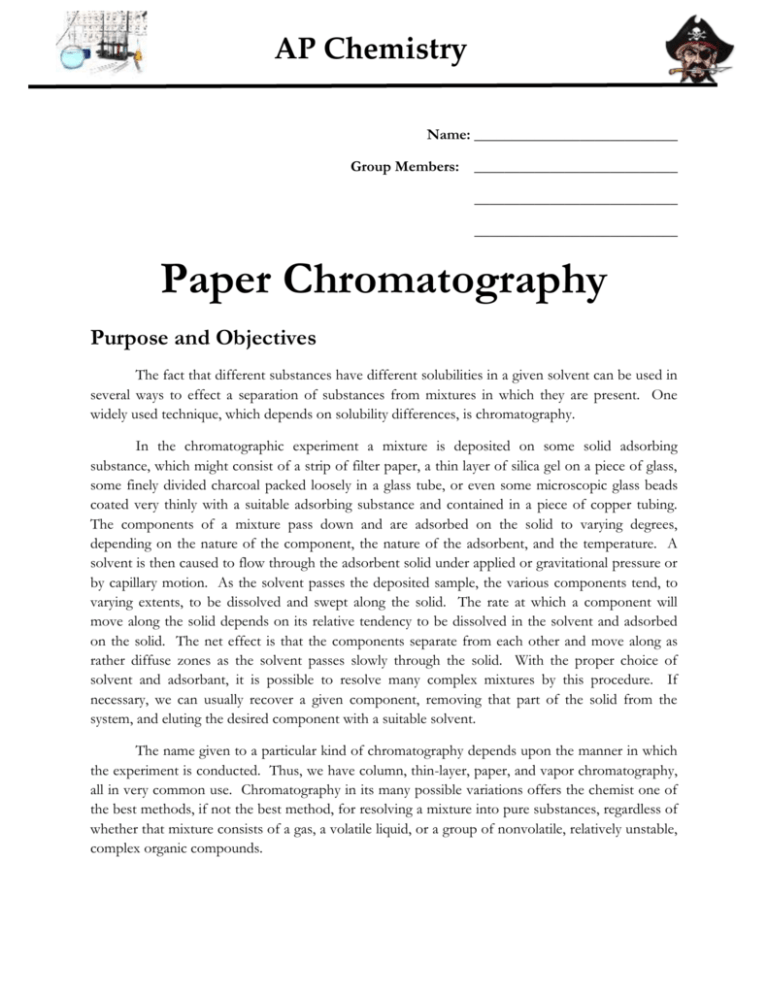





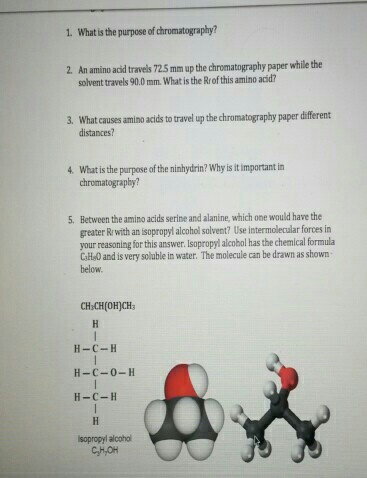
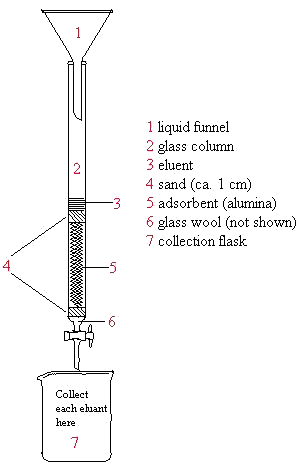

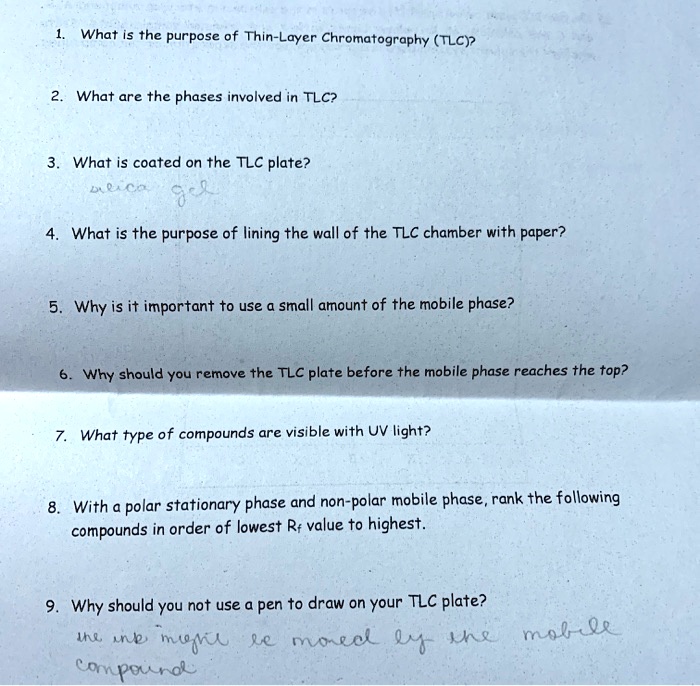
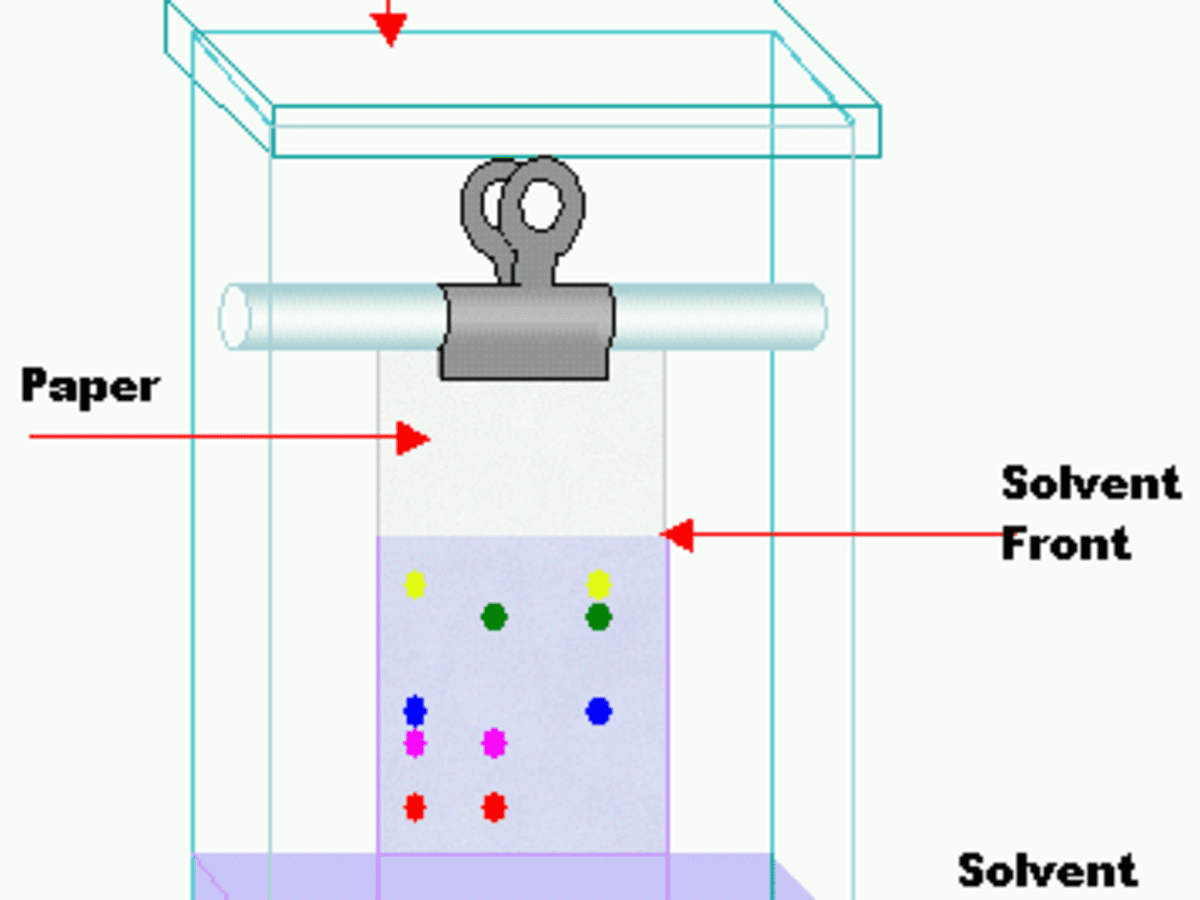




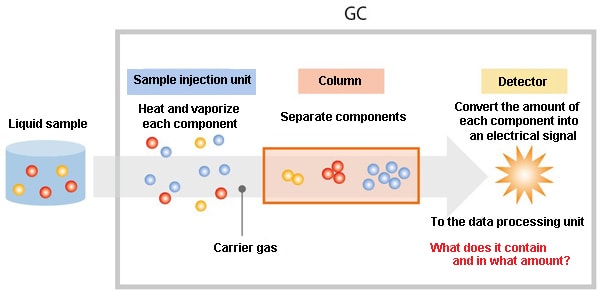
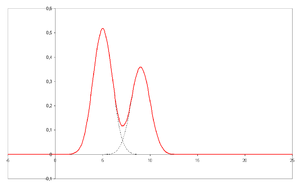



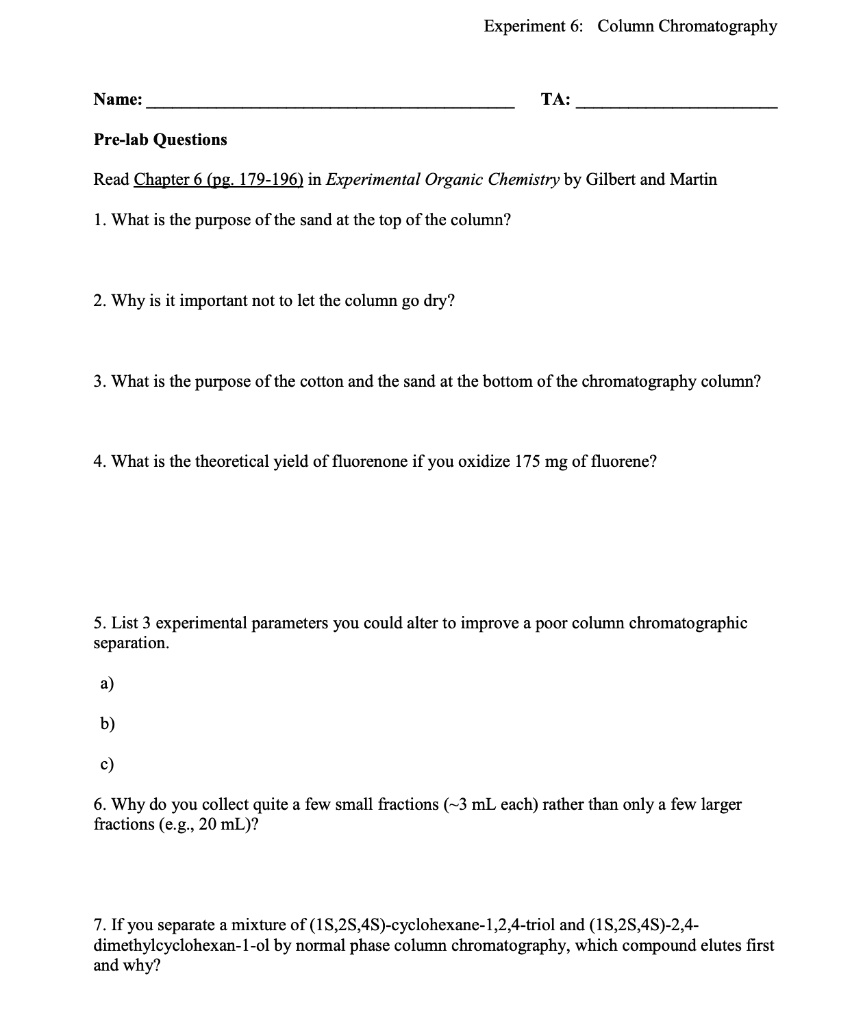


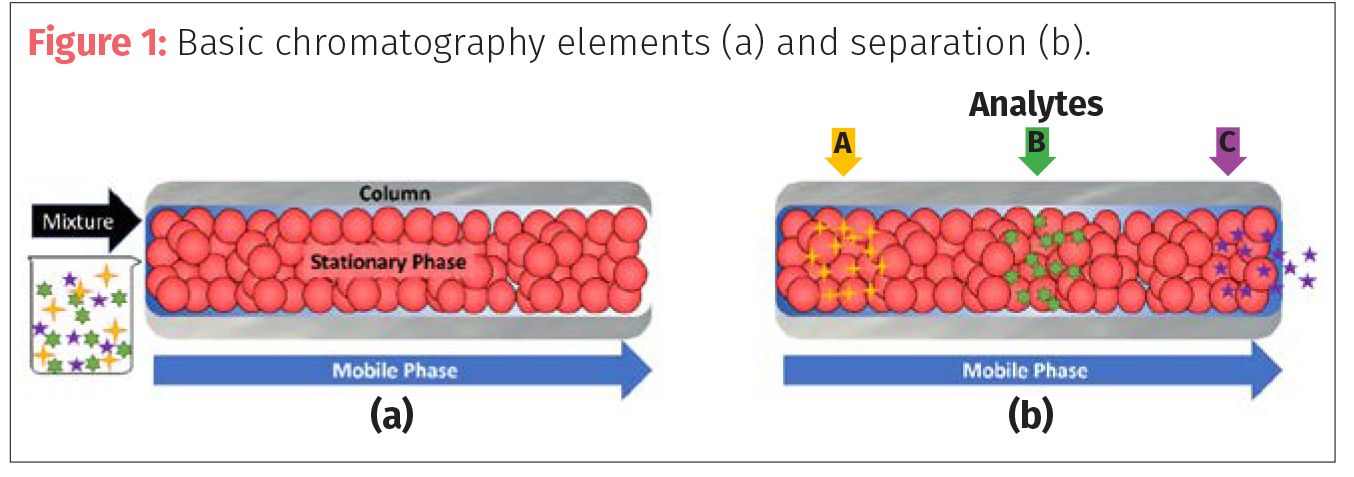
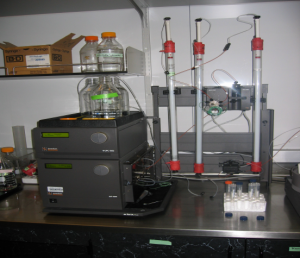
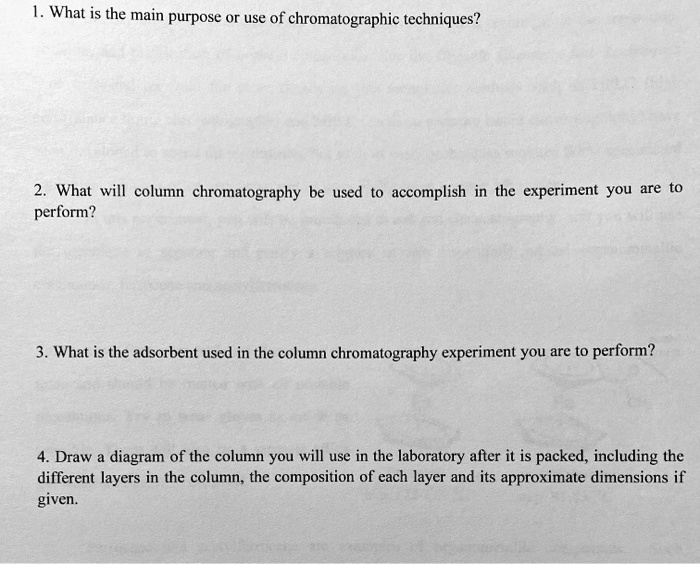
0 Response to "42 what is the purpose of chromatography"
Post a Comment